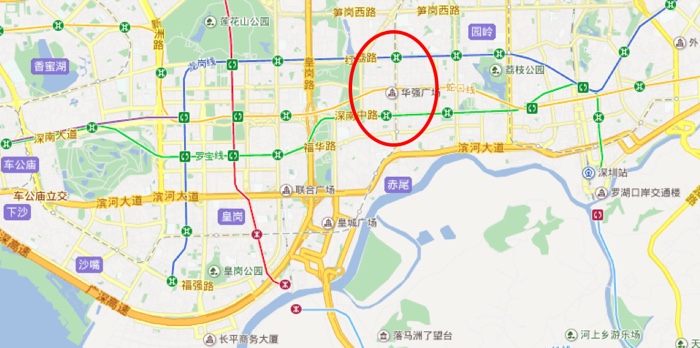Last week, a journalist asked me questions about the electronics market located around HuaQiangBei road in the center of Shenzhen.
If you have an interest in the electronics industry (and electronic components are embedded in more and more products — that’s the ‘Internet of Things’), you need to know about HuaQiangBei.
What is the history behind HuaQiangBei?
In the early 1980s, a number of electronics assembly factories were set up in that area. As the factory facilities were renovated in office buildings, and as Huaqiang North road became a major shopping district, the whole area remained specialized in electronics.
What is sold in HuaQiangBei?
The Huaqiangbei market includes mainly the following items:
- Electronic components — mostly for use in non-computer products (smartphones and tablets, drones, fridges, cars… the list is pretty long).
- Electrical/electronic devices, such as the testing devices in the Duhui dasha building.
The components sold in all the little shops and stalls are standard. They are often surprisingly cheap. How are they so cheap? Smartphones are made by the billions. Many components that go into smartphones are also made by the billions. They prices have gone down a lot over the past 5-10 years.
Will you find some top-of-the-range components there?
You might find some. But you probably won’t find the more proprietary parts that go into Apple’s or Samsung’s phones — I am referring to those few critical components that make a difference and required heavy investment R&D. Their supply chain is pretty much closed.
However, you might find many copies of those high-IP components.
What are the downsides of HuaQiangBei?
It is not an easy market to navigate for foreigners who go there for the first time:
- You might have to spend a whole day to find exactly what you are looking for. It is a mess, spread out over many buildings.
- The merchants’ English is poor, on average.
- Quality is very low to medium. Don’t expect high quality components.
- If you want to know who is a trader and who is a manufacturer, it will be difficult.
Who sells on that market?
Mostly wholesalers and small retailers. They buy from manufacturers, often in small orders, and generally have access to stock just one or two blocks away from their shop.
There are also some manufacturers with a booth here and there, of course, but I believe they are a minority.
What is the impact of this market on the local EMS factories?
There are so many standard components available in stock, it makes Shenzhen manufacturers’ lives easier. It is easy to buy exactly what’s needed and compare prices.
It is good for buyers and traders, too, since they can get a quick idea of components’ prices. Challenging a supplier’s quotation is often easy.
What is a good complement to a visit in HuaQiangBei?
Go and visit the trade shows in Hong Kong and/or the Canton fair (around mid-April and mid-October). You will see more customized electronic products there, with much more intellectual property.
You will also see some components there (in the Global Sources shows), but you will see finished products mostly. It is a bit similar to the Las Vegas CES (but smaller and less exciting, of course).
How much of the electronics supply chain is around Shenzhen?
I would guess that Shenzhen + Dongguan + Huizhou represent about 70% of china’s electronics production. (I am including not only finished products but also components such as PCBs, displays, casing, etc.) I haven’t seen official statistics on this topic.
With rising wages rise, are they moving away?
Very, very little has left China. Actually more and more will be made in China, I guess, based on Beijing’s efforts to get more semiconductors and other complex components made in China.
I guess some of the production is shifting away from Shenzhen (to places like Chongqing, Zhengzhou, Xian, etc.). The dynamic behind this is the move of some large assemblers to those areas; some of their suppliers tend to follow them in order to decrease the time and cost taken by transportation.
But, overall, labor costs are not a big part of a typical electronic product’s final cost.
Another driver of changes is China’s policy. Nearly all the PCB factories that were in Shenzhen and Dongguan have been forced to move away (because they pollute rivers) but most have relocated in nearby Huizhou.

